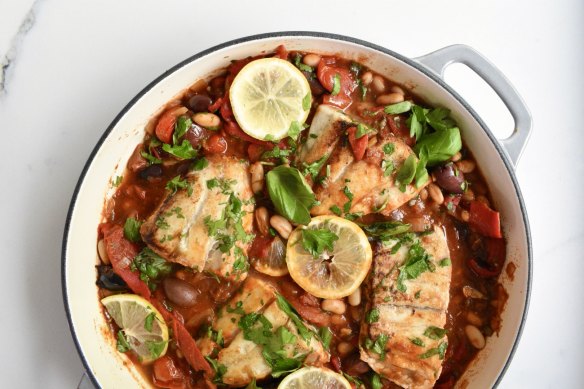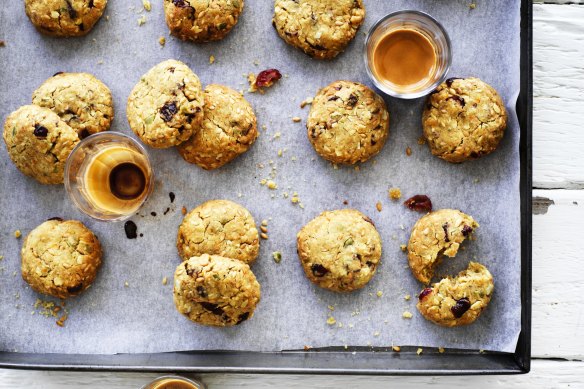A dietitian’s guide on what to eat during the peri- and menopausal years
Susie Burrell explains the best foods to eat – and avoid – to help ensure a long and healthier midlife and beyond.
Take a moment to consider the way your mother, or even grandmother, dealt with the physiological changes of the peri- and menopausal years. Chances are, it was barely mentioned.
Fast-forward 30 to 50 years, and we are at a time when more medical professionals and high-profile female journalists are bringing attention to this time in every woman’s life.

With the average Australian woman expected to live until the age of 85, it is certainly time to talk more openly about the effect the menopausal years have on women’s health in general, and the key lifestyle changes to make during these years to help ensure a long, happy and healthier in midlife and beyond.
What happens in your 40s and 50s
Declining oestrogen levels throughout the peri-menopausal years (10 or so years before menopause, which is marked by the final menstrual period) are largely to blame for the myriad symptoms women frequently experience. These may include sleep disturbance, brain fog, hot flushes, night sweats, irritability, eye dryness and weight gain.
Oestrogen plays a dominant role in regulating body weight and helps to protect the body from central fat deposition. Once levels of oestrogen start to naturally decline, women become more vulnerable to central weight gain. The loss of muscle mass during this time also makes weight gain more likely.
In addition, many of the physiological changes occurring throughout the menopausal years are “pro-inflammatory”, which means hormones such as insulin can be adversely affected, again making it harder to lose weight.

The link to inflammation
The menopausal years have been described as a state of chronic inflammation, with many pro-inflammatory pathways activated once oestrogen is no longer actively working to help prevent central weight gain. This is the primary reason that the risk of heart disease, in particular, climbs exponentially in women in their 50s, as weight gain around the abdomen significantly increases heart disease risk.
To help buffer weight gain, and the associated disease risk, the Mediterranean diet has been shown to help to reduce the risk of cardiovascular disease, improve bone mineral density, reduce the risk of breast cancer and improve mood.
A higher protein diet will help to regulate insulin and glucose levels, and prevent cravings.
While many of us believe we eat a Mediterranean diet, to truly follow this eating plan, we need to include seven to 10 serves of brightly coloured fresh fruits and vegetables daily, along with a couple of serves of extra virgin olive oil, plenty of oily fish in place of red meat, and very little processed food. In other words, not just eating pasta every night with some olive oil dipped in bread and a glass of red wine.
There is also evidence to show that these dietary patterns may naturally help to delay menopause. One study published in the Journal of Epidemiology and Community Health tracked more than 14,000 menopausal women over a four-year period and found that the women who had experienced a more delayed menopause during this time had significantly higher intakes of vitamin B6, legumes and oily fish compared with those who had an earlier menopause and consumed more refined carbohydrates such as rice and pasta in their diet overall.
Protein is paramount
Increasing protein intake is one of the key dietary changes to make during these years, as not only does a diet higher in protein help to prevent muscle mass loss, it also helps to naturally lower overall carbohydrate intake. In addition, a diet higher in protein will help to regulate insulin and glucose levels, and prevent cravings that drive the intake of sweet, carbohydrate-rich foods. At a minimum, aiming for protein intakes of at least 1.2 grams per kilo of body weight or at least 80-100 grams in total per day is a good starting point. Another way to meet this target is by including a lean, protein-rich food such as fish, lean meat, tofu, dairy, eggs or legumes at each meal and snack.

Lower the carb load
When it comes to carbs, the message is not that they are “bad” for our health. Rather, as we tend to become less active as we get older, we need far less than we once did. So skip the heavily refined white bread and baked items and shift to controlled portions of wholegrain, natural sources of carbohydrates in the form of dense grain breads, oats, fruit and vegetables such as sweet potato. This will ensure you get the carbs you need, while still lowering your overall intake to help support weight control.
Target bone health
Oestrogen is required for calcium absorption in the bones so as oestrogen levels decline, bone health can be adversely affected. For this reason, getting 1300mg of calcium each day via three to four serves of dairy, fortified plant milks, tofu, soybeans, nuts and seeds is crucial to protect bone health long term. For those who prefer plant-based milk alternatives, these options must be fortified with calcium, and for non-milk drinkers, it may be worth discussing supplementation with your GP or dietitian.
Superfoods for women
- Oily fish, salmon, sardines: Richest natural source of omega-3 fats
- Legumes: Associated with delayed menopause
- Pomegranate, cherry juice: Extremely high in antioxidants
- Extra virgin olive oil: Helps to reduce hot flashes
- Tofu, soybeans: Mimics the effect of oestrogen in the body
- Un-hulled tahini: Naturally rich in calcium
- Pepitas, walnuts: Rich in zinc and plant omega-3s
WHAT TO AVOID
Crack down on alcohol
While there’s nothing wrong with enjoying a glass or two of wine occasionally, Australia is known for its binge-drinking culture, and if you are a regular drinker, it is unlikely to be helping menopausal symptoms such as weight gain and poor sleep. Not only is alcohol high in calories, but alcohol consumption increases inflammation, so make an effort to minimise your intake, especially if you’re experiencing hot flushes and poor sleep.
Watch the caffeine
Caffeine is a natural stimulant that can affect sleep, and has also been shown to exacerbate hot flushes. Keep in mind that caffeine is found in a range of foods, including tea and chocolate, so watch your intake.
Refined carbohydrates
The bulk of carbohydrate-based foods we enjoy in Australia are white and/or contain significant amounts of sugars – the types of carbohydrates that negatively affect glucose and insulin levels, promote inflammation and weight gain over time. For this reason, ditching white bread, sweet treats and heavy noodle and rice dishes will help minimise menopausal symptoms while also preventing weight gain over time.
The best recipes from Australia's leading chefs straight to your inbox.
Sign up